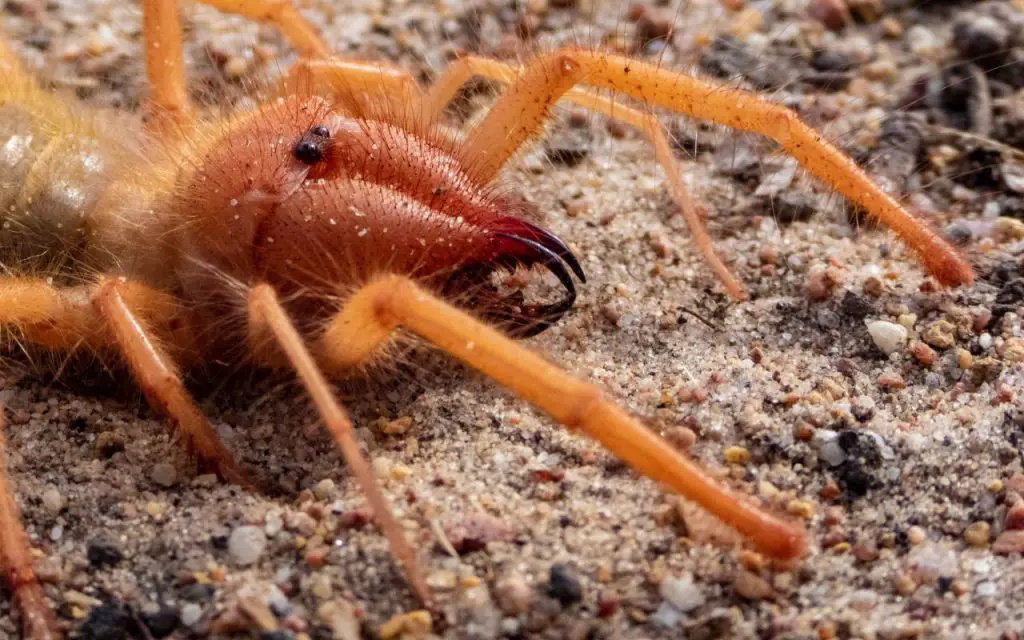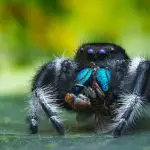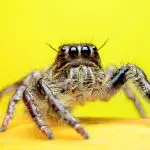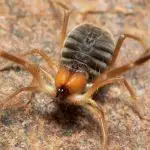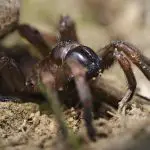They are well-known for being fast, and more than a little ferocious – but what are Camel Spiders? Let’s take an in-depth look to find out…
Camel spiders are among the most popular and exciting little creatures that amaze humans. They are tiny creatures that people sometimes mistake for spiders, but they aren’t spiders.
People are interested in camel spiders because they are fascinating to learn about and have a lot of stories behind their strange and scary features.
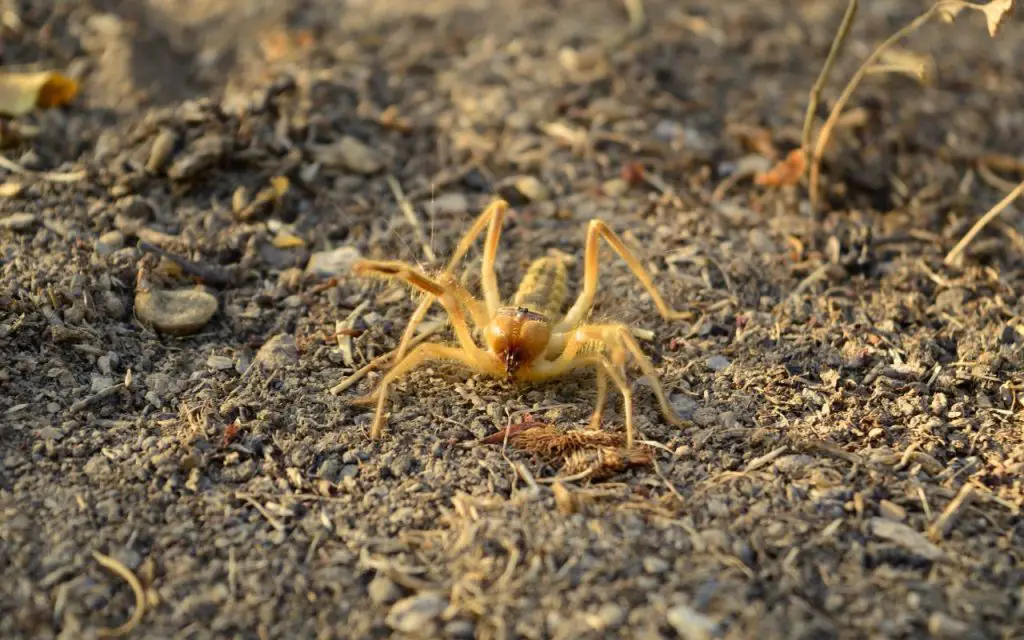
Is a camel spider a spider?
No. The camel spider is not a spider, although these unique creatures belong to the group Arachnida as spiders do. Eleven orders of arachnids include harvestmen, pseudoscorpions, whip scorpions, solpugids, and camel spiders.
A few additional names for this creature are Wind Scorpion, Sun Spider, and Egyptian Giant Solpugid. Not many people may know, but the Latin word for “Sun Spider” is Solpugid.
Many are confused and get intrigued with camel spiders since it looks like one. Arachnida is in a group of spiders, but not all are spiders like camel spiders.
As you go on, the differences between the two will become apparent. For example, many pet owners now keep camel spiders because they are fascinating.
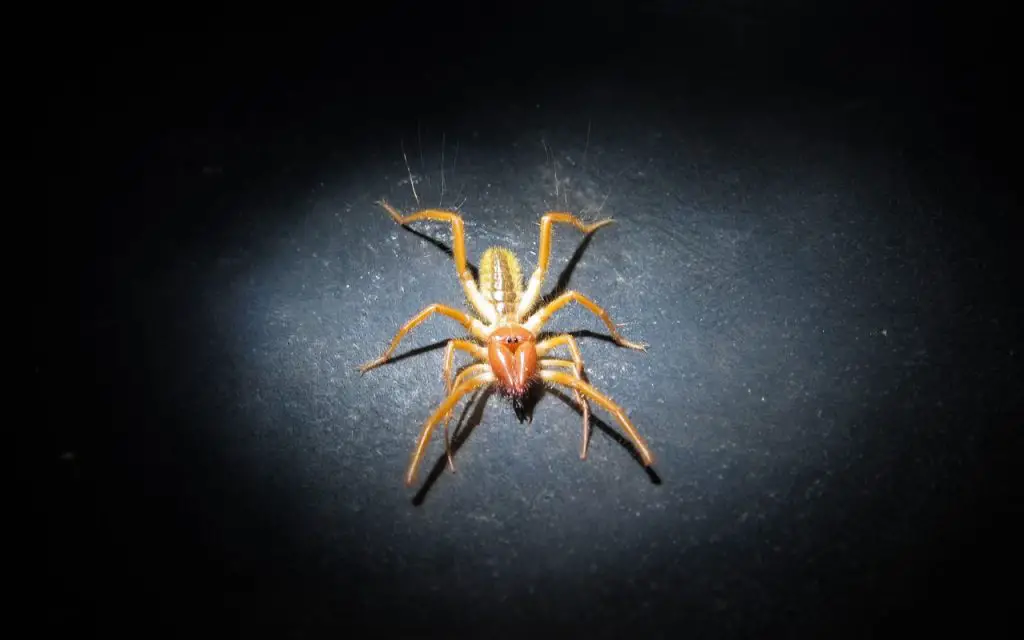
How is their anatomy different from an actual spider?
Most people mistakenly believe that camel spiders have ten legs while they only have eight. It is because camel spiders have two lengthy pedipalps close to their mouths.
True spiders have four pairs of legs with two to three claws at the ends. Many three-clawed spiders are web-builders with specialized nails and hairs for manipulating silk.
Their jaws, called chelicerae, are the most significant part of their bodies and have most of the structures used to classify them. The chelicerae and pedipalps are two arachnid-specific limbs of camel spiders.
They use these pedipalps to locate and capture their victims. At the same time, the chelicerae are pinchers capable of grabbing, tearing, and cutting.
Tiny hairs cover the body of a camel spider, which is tan and dark brown. Camel spiders protect themselves from the desert heat with tiny hairs on their bodies.
But the spiders have rigid exoskeletons of protein and chitin covering their bodies. The outermost layer of a spider’s cuticle is thick.
A thin waxy coating also helps the spider retain water. Even while it serves as a protective barrier on the outside, the cuticle also contains the spider’s sensory organs.
Camel spiders have stiff sections of their chelicerae that they can rub together to make a hissing or chattering sound.
Also, most spiders’ chelicerae include teeth used to inject venom into their prey. So, yes, real spiders have venom, unlike camel spiders, which are not poisonous.
Lastly, camel spiders are unable to spin webs. They are also unable to climb vertically up a wall, unlike real spiders.
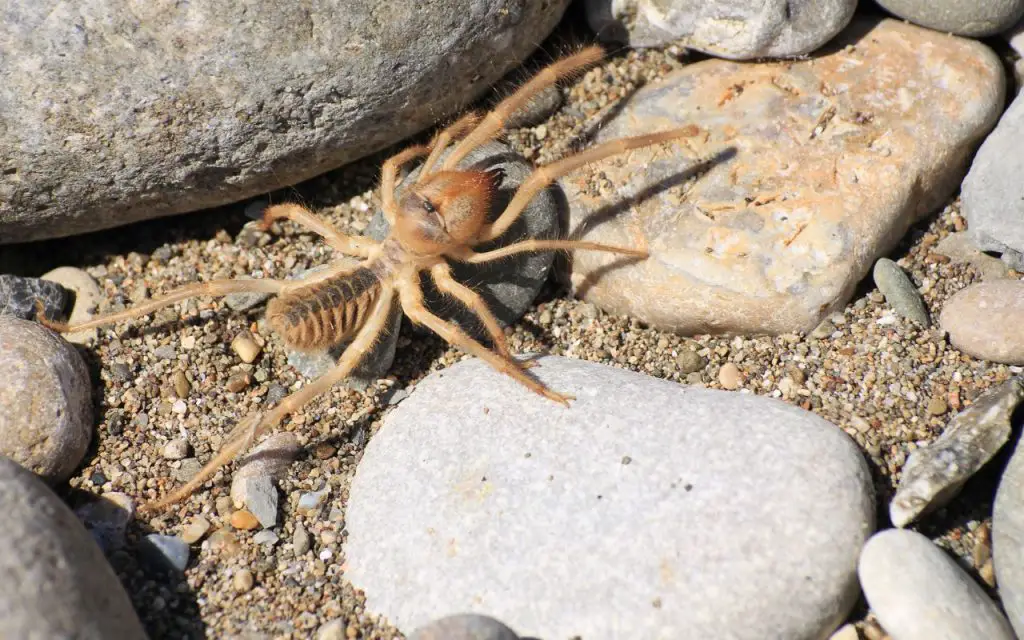
Where are camel spiders found?
The giant camel spiders, also known as solifuges, can be found in the Middle Eastern deserts. However, seeing them in Mexico and the United States Southwest is common.
There are some documents that they have found in some parts of the United States desert. Therefore, it will be an excellent encounter if you experience one in your state.
For instance, several reports indicate that you may find camel spiders in Southwest California.
What is their preferred habitat type?
Camel spiders preferred habitat is in the desert. They are opportunistic carnivores living in deserts and hunting at night while avoiding the sun during the day.
They have evolved to sprint quickly in harsh desert environments. As a result, camel spiders are a common sight in the deserts of the Middle East.
Camel spiders live alone except when it’s time for them to mate. Unfortunately, they can also be mean if they feel threatened. Camel spider’s habitat is where they can run fast and find their victim or food.
Even though they are becoming popular today as house pets and many adore having them because they are so amazing. They should live alone in desert environments.
Their ability to adapt to different environments has undoubtedly contributed to the long lifespan of millions of years. They can live where there aren’t many other living things and are distant.
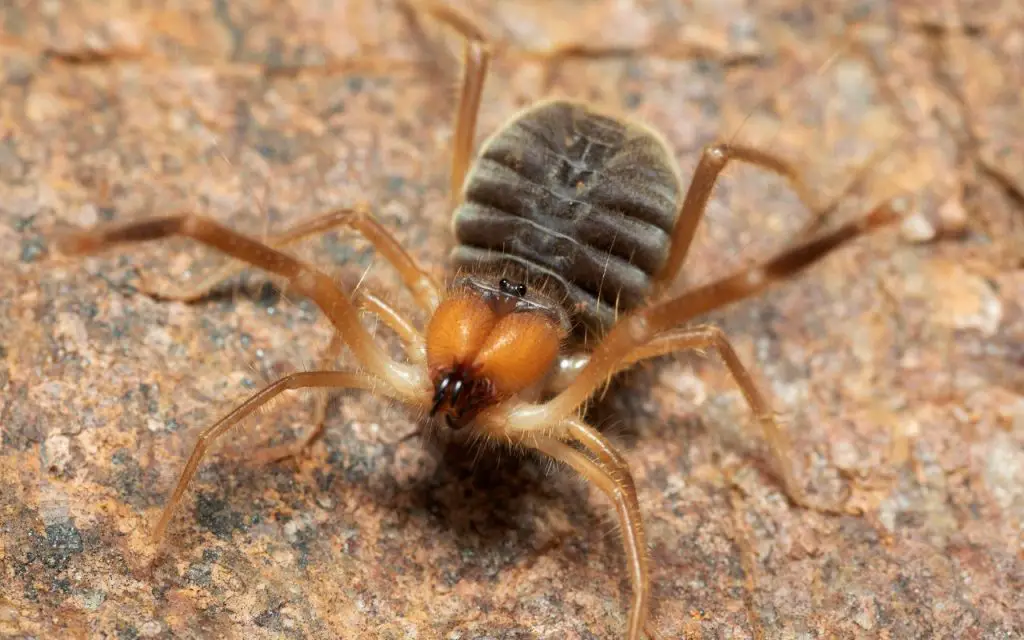
Do camel spiders need heat?
Sometimes you can find camel spiders in grasslands or forests. In general, they prefer warm, dry places and avoid cold spots.
Suppose you intend to keep them, place them at a warm temperature during the day, around 35C or 95F. Then, allow the nighttime temperature to fall to between 24-28C or 75-82F.
While they require relatively little humidity during the day, they need a light misting at night to maintain a 70-90% humidity level. In addition, some species create tunnels to hide from the heat of the day.
How big are camel spiders?
How giant are camel spiders? Camel spiders can grow to be about 15 cm long and weigh about 2 ounces or 56 grams. You may think it is the same size as the Tropidacris grasshoppers, reaching up to 12–15 cm.
At most, you can find the giant camel spider in the Middle East desert.
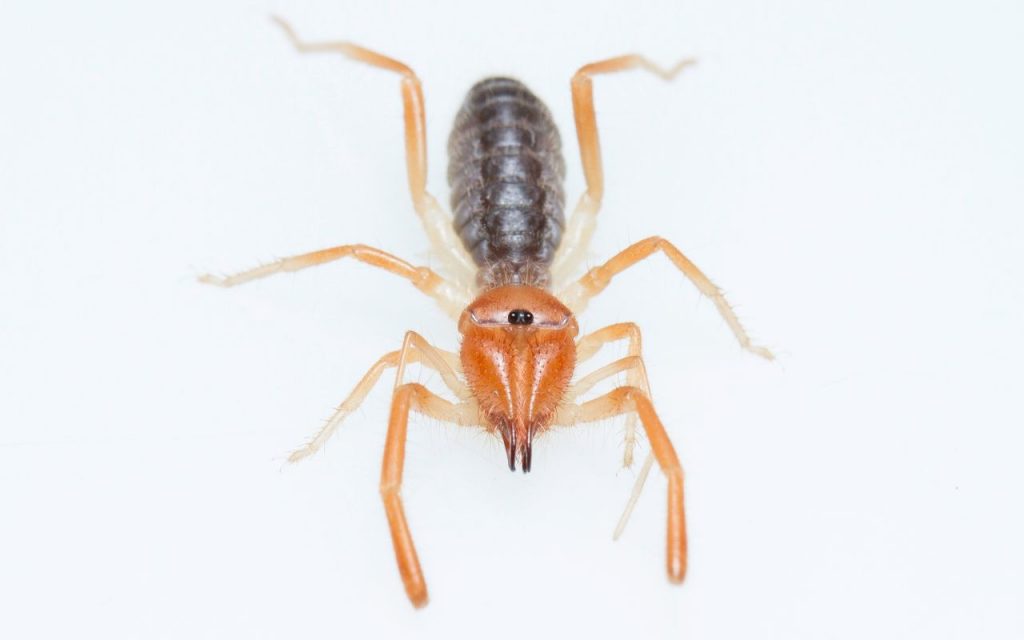
How fast are camel spiders?
Camel spiders can move extremely swiftly in their native scrubland or desert habitat. They do move quickly, but only when compared to other spiders.
Camel spiders’ swift movement is one of the desirable qualities have. They look to hurry while still moving quickly. Their top speed is roughly 10 miles per hour.
Are camel spiders venomous?
No. Even though camel spiders have a scary name and look, they are carnivores. Therefore, they do not contain venom like many spider species.
Although camel spiders lack venom, they use digestive juices to liquefy their victims’ flesh so they can quickly suck the leftovers into their stomachs. In humans, they are entirely harmless. However, their bites are painful but not fatal.
Even if the poison doesn’t kill the person, a sizable wound may form on the body. Therefore, it is a must to administer treatment to prevent an infection from spreading to the injury.
It can be exceedingly challenging since, if not carefully watched, the infection can quickly spread throughout the body. Painkillers, steroids, and antibiotics are common treatments.
It is also necessary to place sterile bandages until the wound has sufficiently healed to reduce the possibility of foreign objects getting in.
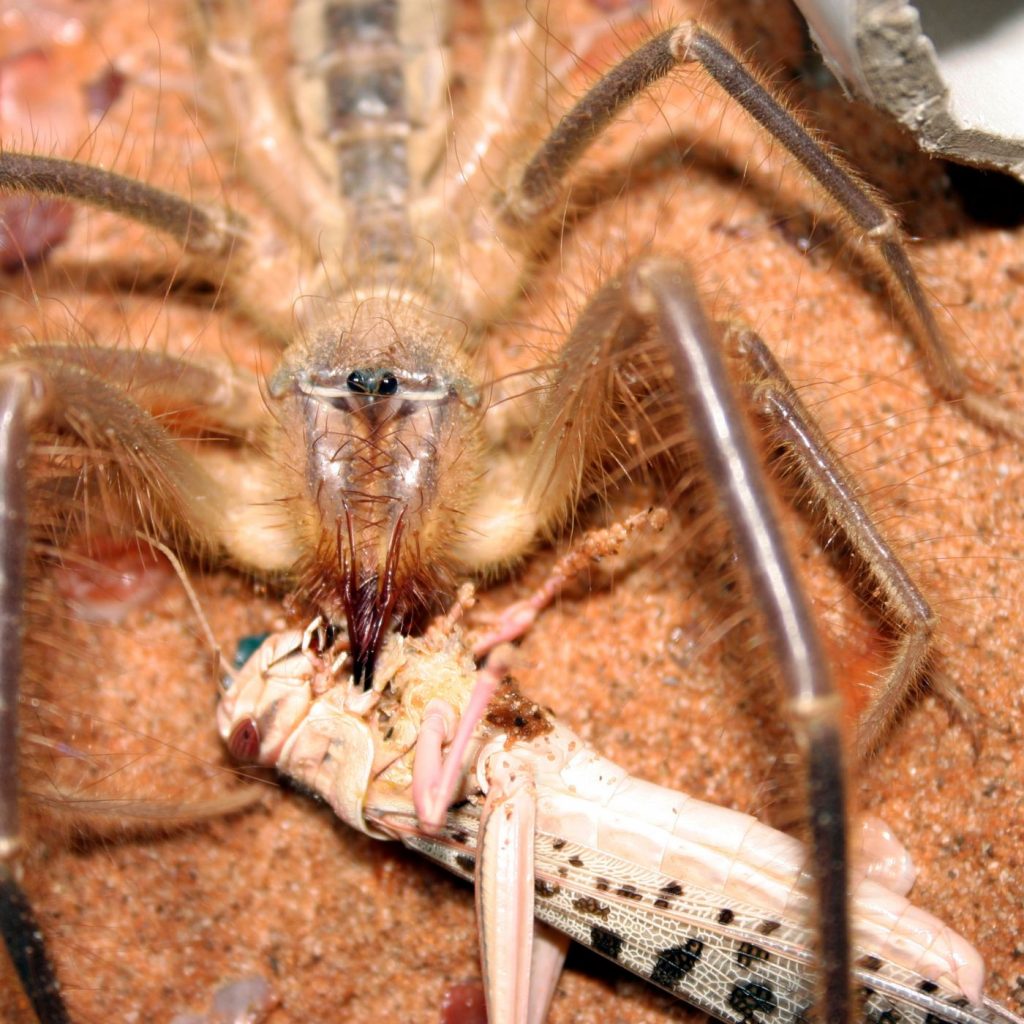
What do camel spiders eat?
Camel spiders eat bugs, lizards, small birds, and rodents. Their jaws can be up to one-third the length of their bodies and are big and strong.
Camel spiders grasp their targets and hack or saw them to pieces. The tiny creature will then cover the parts of its prey with digestive juices.
These fluids have enzymes that dissolve the victim’s remains into a liquid. Then the camel spider will suck the remaining juices.
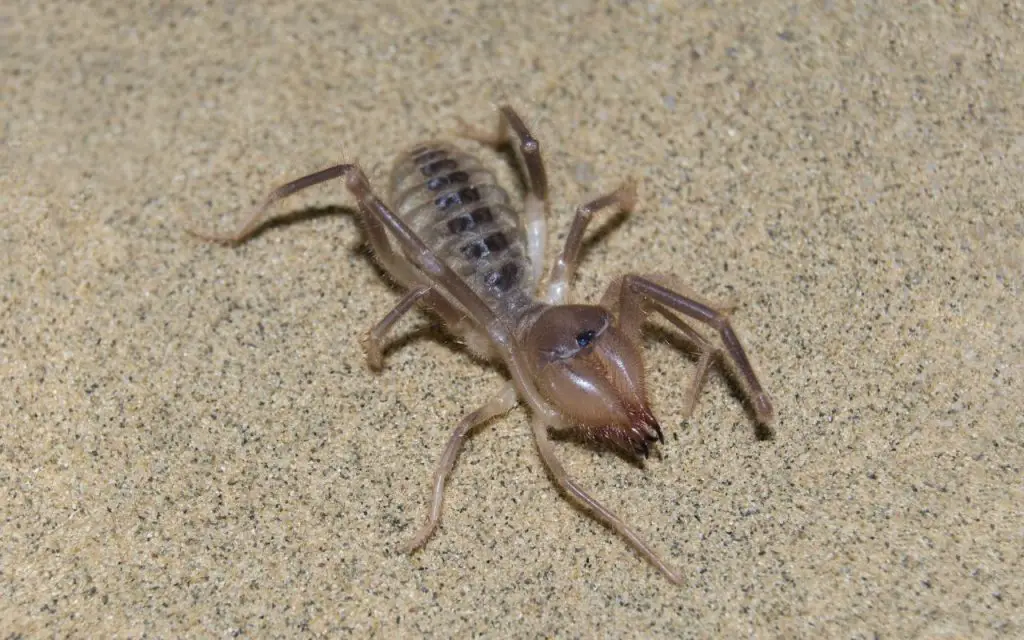
FAQ relating to what are camel spiders
Can camel spiders hurt you?
A camel spider may follow a person, but it does not intend to bite them. Instead, camel spiders follow people’s shadows. They are harmless creatures.
If a person sees a camel spider coming after them, they are likely to run, and the spider may speed up to stay in the person’s shadow. A camel spider bite can be painful despite lacking a venom sac.
Therefore, if you lack professional expertise, you must continue to avoid contact with these species. Pet camel spiders are also not advisable if you have kids and seniors at home.
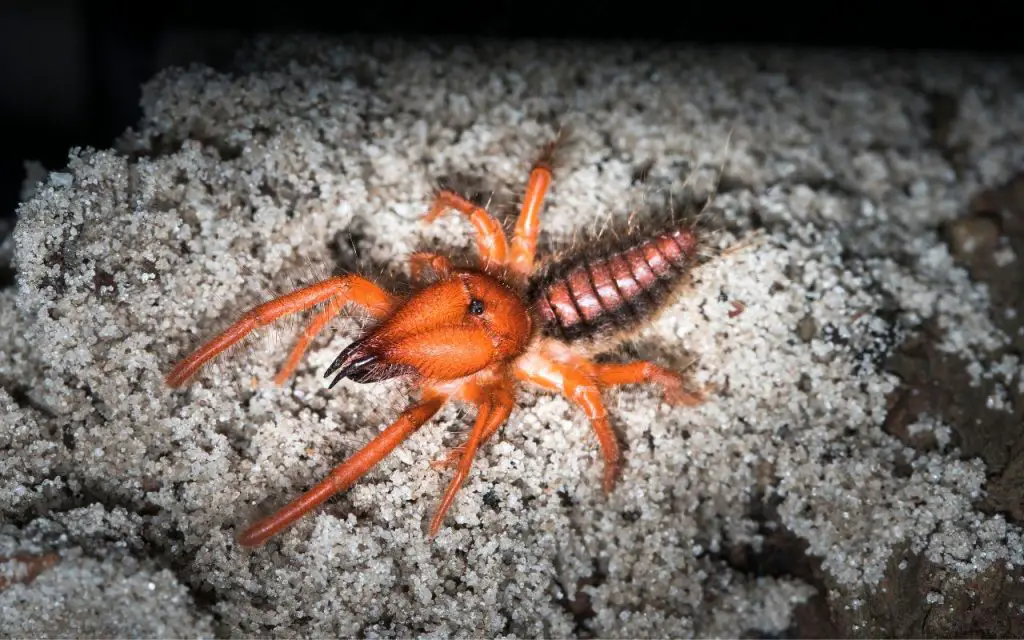
What are camel spiders classified as?
Listed among the insects in the class Arachnida is the camel spider. Arachnids include creatures like scorpions and spiders.
The fact is they belong to the Solpugid order of animals. According to research, their body length ranges from a few millimeters to several centimeters.
Significant Solpugid characteristics that are present in camel spiders are:
- Chelicerae are noticeably more prominent in size for catching insects and other prey in general look.
- Racquet organs are particular sensory organs that have biological, behavioral, and medicinal relevance.
- Usually nocturnal or crepuscular, they spend the day hiding in cracks and beneath stones or digging burrows in bare earth in places with little or no vegetation.
- In meadows and woodlands, there are several species that you can encounter.
- Despite their frightening look and aggressive nature, solpugids lack venom glands and are mostly harmless to humans and domestic animals.
- Larger species’ bites can lacerate or pierce the skin; sometimes, stitches may require to close the wound.
Is a camel spider An ant?
Although camel spiders look like an ant, at first sight, it is not an ant. They are likely associated with spiders, but they are also not a spider.
The curious relationship between camel spiders and ants has drawn much attention – so many have mistaken camel spiders for ants. Camel spiders run around like crazy, trying to kill and eat any animal their size or smaller, like ants.
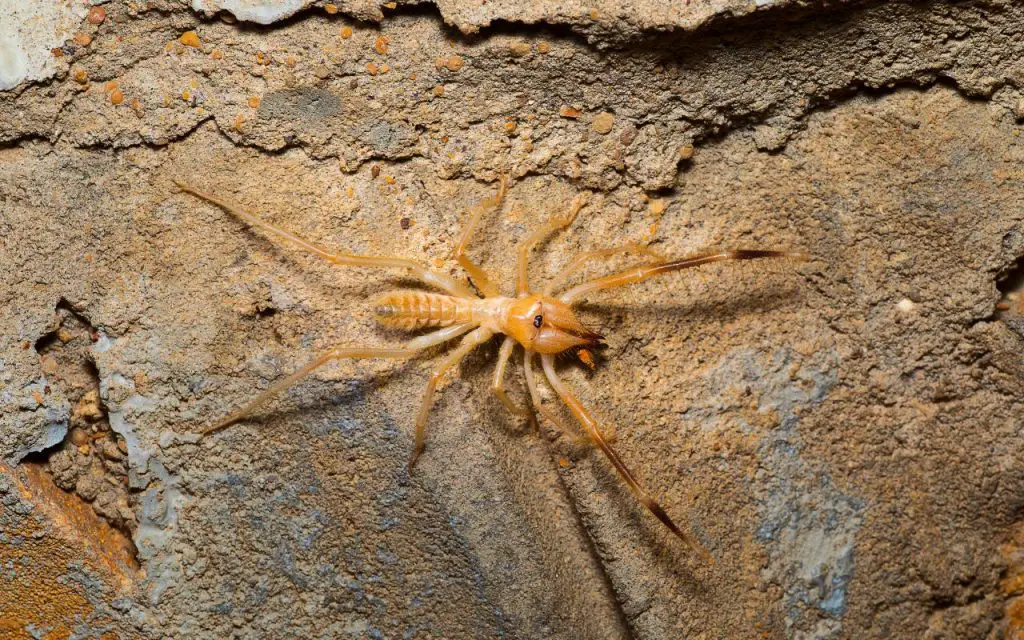
Do camel spiders live in America?
You can find camel spiders in some parts of America. For example, you may find some in the Arizona desert.
A little animal, which can rush and run down most prey, is also native to Colorado. They shelter themselves in various places throughout the day, such as under or inside rocks, logs, and plant stalks.
Camel spiders can be found in other desert regions as well. They hang out near outside lights at night and consume bugs that have fallen to the ground.
Furthermore, the southwest states of the United States are primarily home to North American camel spiders associated with the Ammotrechidae and Eremobatidae families.

